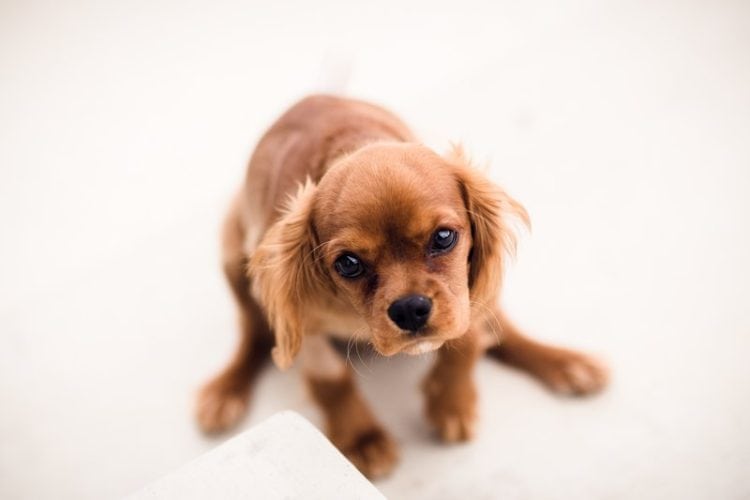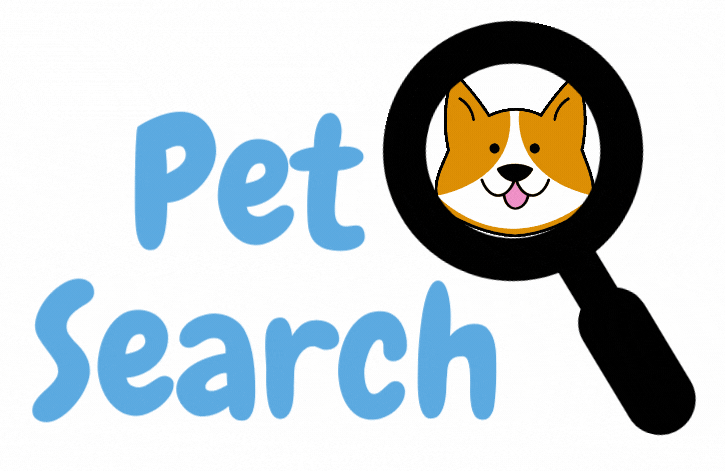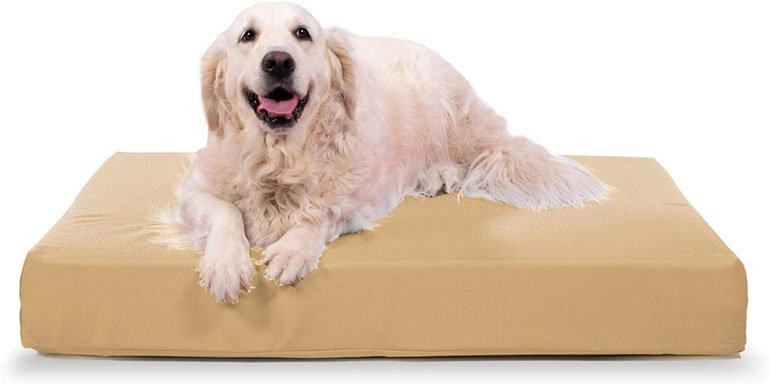Pet Search is a mother-daughter run blog. Together we have over 40+ years of professional pet grooming experience and we hope to pass some of that on to our readers throughout our in-depth and non-bias reviews and buyers guides.
We do not accept sponsored posts however we do include affiliate links throughout our posts and we receive a share of the revenue generated from your purchase which contributes to the running of CleanerPaws.com.
This review guide was updated in February 2019.
A puppy is always a great addition to any family; they bring joy, laughs, and bundles of fun.
However young puppies can also bring stress at the same time.
The problem is, some people don’t understand that raising a puppy is much like raising a child—patience is a virtue.
At the same time as providing joy and filling a home with their unrelenting energy, they can also create mess just about everywhere they go. This means it will be left to you to have to clean up after them.
So, what can you do? Pro Tip – Potty train them early!
Before breaking down the process of how to potty train your puppy, first, it is essential to understand a bit more about the topic and your new dog.
Dogs at a young age are known to be very energetic and active. Like babies, they also do not know ‘rules,’ and that is why you must be prepared to take on the responsibility of teaching your puppy how to behave and who is the ‘boss.’
One common problem that stresses new dog owners the most is when their puppy pees just about everywhere.
Teaching them when and how to use a potty is vital to a happy home, this is particularly true if you live in an apartment without direct access to a garden.
The reason for this mess is because unlike adult dogs, they are not yet able to control their bladder movement. Before teaching them, it is important to observe their bowel interval and estimate just how long they can hold in their pee.
Based on some research, as a puppy ages, their ability to hold their bladder movement increases. At two months, they can hold it for up to 2 hours, and this only increases as they get older. At four months, they should be able to hold it in for 4 hours!
A puppy is most likely to poop/pee at these times:
- When it has finished eating
- At break of day and after waking up from a nap.
- Before it goes to bed
Now that we have taken a quick look at why young dogs need to be house trained we can begin to explore how to potty train your puppy fast.
Potty Train Your Puppy Quickly
- Assign a designated spot.
Now that you have an idea of time intervals, it is time to assign a place for your puppy to begin potty training.
Make sure it’s a spot that’s easy to clean on your part and accessible to your puppy as well.
Follow the time intervals or observe when your puppy appears to be ready to pee then take them to the designated spot. You can even barricade the area to make sure they don’t go anywhere else—just remember to remove the enclosure after they’re done.
- Create a daily eating schedule.
Do your best to feed your puppy on a regular schedule.
This means you know when they’re most likely to pee or poop after eating and creating a routine also makes it easier to regulate your puppy’s bathroom breaks.
- Be available and attentive to your puppy during training.
Now that you have assigned a place and have set a schedule be sure you are also attentive to your puppy’s needs.
Be observant as they can’t exactly tell you when they want to pee so make sure you familiarize yourself with the tell-tale signs.
Once you spot them? Don’t hesitate! Bring them immediately to the designated area before they are able to start.
- Reward your puppy
When you see your puppy beginning to behave correctly always praise their actions.
Sometimes they aren’t satisfied with mere praise, so it is crucial to keep treats handy.
This is a useful training exercise and makes them remember what to do much faster.
Rewarding good behavior is a basic process when it comes to training your pet dog to do anything, and positive associtation can work wonders when it comes to potty training.
- Avoid punishment.
Punishing your puppy for an accident will only produce adverse consequences.
It will teach your puppy that you are to be feared, which can also lead to your puppy being scared to potty. Remember, they are still babies!
Keep your voice gentle yet firm – do not shout or make it look like cleaning up after their mess is a big deal, instead keep calm, move on, and be more attentive next time.
- Be patient.
A puppy cannot learn everything in a single day.
Before getting the puppy, you should have already studied the many responsibilities that go along with raising a dog, so hopefully, you are well prepared.
Getting stressed over little things will only make the issue worse and possibly even destroy the bond between you and your new dog.
All it takes is some extra effort on your part and learning simple techniques that can make your life (as well as theirs!) much more harmonious.
- Surround your dog with love.
Anything can be accomplished if done with love.
Training your puppy may be difficult, but if you instill love, the process becomes far more easier.
Remember, you are also developing a bond between you and your dog and making your puppy feel that they are loved will reap good consequences in the future.
When training your puppy, there are specific factors that you must consider.
Keep these in mind to produce better results and to make your potty training process a lot more efficient.
- Know your puppy’s age – If we have to compare the learning ability of a two-month-old and an eight-month puppy, there is no doubt that the eight-month-old puppy will learn faster.
- If you are not your puppy’s first owner, it is essential to take their history into consideration.If their previous owner has been training them with the basics, then it will be easier for them to absorb the rest.But if you are its first owner, then expect that it may be harder work at first. Nevertheless, everything is possible through hard work and patience. Your dog will learn eventually.

Mistakes To Avoid When Potty Training a Dog
Now, let’s focus on some things you must avoid when you are potty training your puppy.
These are the most common mistakes that people tend to make.
- Overfeeding
Like humans, excessive food intake can lead to obesity.
Puppies don’t know when to stop, so when it sees food, the normal thing to do is to eat.
This isn’t healthy and can become a difficult thing to control. It also disrupts your pet’s bowel movements and may cause issues such as diarrhea.
- Agressive Training
This never works out when training your dog and will only lead to negative associations or, in some cases, even trauma.
There’s a difference between a firm voice and an angry voice—always use a degree of firmness, but never be aggressive towards a puppy or even an adult dog.
Remember, their instinct could kick in, and they will defend themselves in the only way they know how. So, avoid this.
- Expecting it to alert you every time it needs to potty.
If the puppy resolved to pee in an unwanted area, it isn’t their fault.
This only means that you have not been attentive to their needs and you can’t exactly expect your puppy to come to you each time it needs to pee; be responsible and take them out as frequently as possible.
- Praising your dog for doing the wrong thing
Too much love for your dog can result in them becoming spoiled and stubborn when it comes to training.
As established earlier, you can be a loving owner while still maintaining your status as the “Alpha”.
Be assertive with your pet but within reason.
Salty foods are not advisable and can lead to excessive urination.
- Feeding your dog at random periods
If you like to feed your puppy every time you see the food bowl empty, stop what you’re doing right now!
Maintaining a routine, especially during the training period is very beneficial for both you and your puppy.
- Making rugs and carpets accessible
Dogs might mistake them for grass because of its similar soft and absorbent texture.
It will only mean additional hard work on your part.
Tips for House Training Your Puppy
- Choose a short name for your puppy – If the name is too long, the puppy may have a hard time remembering and might even ignore you each time you call for them. It is best to keep your puppies name short, a maximum of two syllables work best. Examples are “Cookie” or “Cooper.”
- Find a regular vet for your dog – It is essential that they have regular checkups during the puppy phase to avoid health problems and other issues. But at the same time, you can learn from a person with experience in dog care.
- Research foods that you are allowed and not allowed to feed your dog – This will have a huge impact on your dog’s diet both in the short and long term and ensure you raise a healthy, happy pet.
- Take your dog out for walks – Research says that puppies need to exercise for at least an hour daily. Walking is a great way to get this exercise, and a no pull dog harness can make the process hassle-free.
- Look out for signs of sickness – Since they are still young and weaker, puppies are more likely to catch diseases when compared to adult dogs. It is essential to go to a vet once you observe strange symptoms. As the saying goes, “prevention is better than cure.”
- Interact with your puppy – At a young age, puppies are curious and open to learning new things. Take this opportunity to teach them some basic training commands.
- Value your puppy’s safety – Be mindful of their whereabouts. It is advisable to buy a collar for your puppy so that in the unfortunate case they get lost; the finder has your contact details which only increases the chances of them getting returned to you safely. Make sure that you buy a collar that is appropriate for your puppies size, and is not too heavy for them to wear.
- Keep fragile objects away from your puppy’s reach – Puppies are active and love to play with just about anything they can get their paws on. To avoid unnecessary damage and accidents which might result in injury, make your home more pet-friendly.
- Be mindful when spraying chemicals – Some sprays have chemical ingredients that can harm your dog. Before spraying, it is best that you let your dog out the house so that they will not be able to inhale the chemicals.
- Make sure your puppy’s surroundings are well ventilated – Fresh air is important not only to humans but also to dogs as well.
- Prevent/remove ticks from your puppy – It is common for dogs to get ticks because of their surroundings. Ticks are found in soil, and the best thing to do is to remove them immediately once you any intruders crawling on your puppy. Always choose a shampoo that’s effective at killing fleas and ticks, but is also gentle on your dog’s skin. Something organic would be best so you can avoid harmful chemicals as well.
- Give your puppy regular baths – When you start to smell an unpleasant odor, it is best that you bathe your puppy. But be informed, a dog’s coat contains natural oils that is keep it soft, so it is important you choose the right products that react well with these natural oils.
We hope this guide was able to provide you with some essential information that can help you to better potty train your puppy.
Remember, the happier and healthier your puppy, the more harmonious your relationship will be.
They are more than just pets; these furry little creatures are family as well so caring for them properly from an early age is key.

